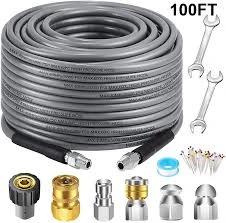sprinkler pipe coupling
The Importance of Sprinkler Pipe Coupling in Irrigation Systems
Irrigation systems are pivotal in ensuring that agricultural practices yield optimal results, especially in regions where water scarcity is a concern. Among the various components that make up these systems, sprinkler pipe couplings play a significant role in maintaining efficiency, durability, and performance. In this article, we will delve into what sprinkler pipe couplings are, their types, functions, and the importance of choosing the right coupling for effective irrigation.
What are Sprinkler Pipe Couplings?
Sprinkler pipe couplings are mechanical connectors used to join sections of piping in an irrigation system. They allow for the easy assembly and disassembly of the sprinkler system, enabling modifications or repairs when necessary. These couplings are designed to withstand various environmental conditions while ensuring a tight seal to prevent leaks.
Types of Sprinkler Pipe Couplings
There are several types of sprinkler pipe couplings, each serving a unique purpose
1. Threaded Couplings These are the most common type, featuring male and female threads that screw together to form a secure joint. They are versatile and easily installed, making them ideal for small to medium irrigation systems.
2. Slip Couplings Designed for joining two sections of pipe, slip couplings slide over the pipe ends and are usually glued or welded to ensure a leak-proof fit. They are particularly useful in situations where pipes need to be extended or repaired without the need for excessive disassembly.
3. Compression Couplings These couplings use a rubber or plastic ring and a metal nut to create a seal. The compression mechanism ensures a tight fit, making them effective for various types of pipes, including those made of PVC and polyethylene.
sprinkler pipe coupling

4. Expansion Couplings These components are designed to accommodate the thermal expansion and contraction of pipes. As temperatures change, pipes can expand or contract, and expansion couplings allow for this movement, reducing the risk of damage.
Functions of Sprinkler Pipe Couplings
The primary function of sprinkler pipe couplings is to connect different pieces of pipe effectively. However, they also play other important roles
- Leak Prevention A well-sealed coupling minimizes the risk of leaks, which can lead to water wastage and reduced efficiency in irrigation operations. - Flexibility in Design Couplings enable farmers and landscapers to design irrigation systems that can be adapted or expanded as needed, accommodating the specific needs of different crops or landscapes. - Ease of Maintenance Coupling systems can be easily disassembled for repairs and replacements, simplifying maintenance efforts and reducing downtime.
Importance of Choosing the Right Coupling
Selecting the appropriate coupling for a sprinkler pipe system is vital for ensuring long-term functionality. Factors to consider include the type of material used for the pipes, the expected pressure and flow rates, and the specific environmental conditions the system will face. For instance, using a coupling designed for high-pressure systems in a low-pressure installation could result in equipment failure, whereas the opposite could lead to inefficient water delivery.
Moreover, the right coupling can enhance the overall performance of the irrigation system. A poorly chosen coupling may allow for water leakages, leading to increased operational costs and potentially causing damage to surrounding areas through erosion or pooling.
Conclusion
In conclusion, sprinkler pipe couplings are essential components of any irrigation system, serving crucial functions from connection to maintenance. Understanding the different types and their respective benefits will aid in the design and installation of effective irrigation systems. Ultimately, investing time and resources into selecting the right couplings will ensure that those systems operate efficiently and sustainably, paving the way for successful agricultural ventures.
-
Ultimate Spiral Protection for Hoses & CablesNewsJun.26,2025
-
The Ultimate Quick-Connect Solutions for Every NeedNewsJun.26,2025
-
SAE J1401 Brake Hose: Reliable Choice for Safe BrakingNewsJun.26,2025
-
Reliable J2064 A/C Hoses for Real-World Cooling NeedsNewsJun.26,2025
-
Heavy-Duty Sewer Jetting Hoses Built to LastNewsJun.26,2025
-
Fix Power Steering Tube Leaks Fast – Durable & Affordable SolutionNewsJun.26,2025

